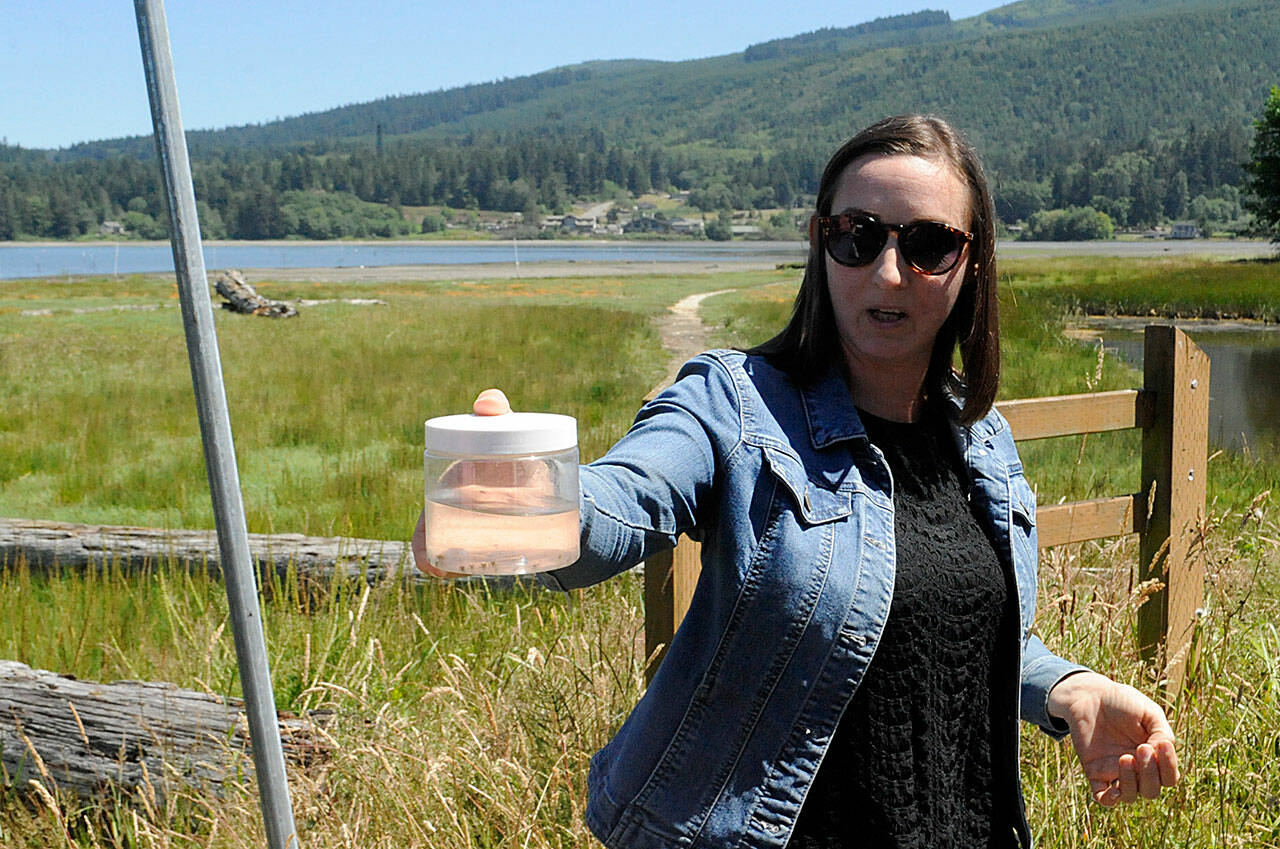Clallam County tribes and other Western Washington tribes are slated to receive up to $50 million over five years for salmon and shellfish habitat restoration through the federal government.
The U.S. Environmental Protection Agency made the announcement July 19 in Blyn, following the Northwest Indian Fisheries Commission’s monthly meeting at the 7 Cedars Resort.
EPA staff said the funds come from the Bipartisan Infrastructure Law to the commission, which provides natural resources management support for several Western Washington tribes — including the Jamestown S’Klallam Tribe.
Casey Sixkiller, EPA’s Region 10 regional administrator of Seattle, said the tribes continue to lead joint efforts to restore and protect waters for future generations.
“Today’s $7.5 million grant [appropriated for 2023] is a down payment on a $50 million investment over the next five years to support [tribe-]sponsored projects to upgrade critical infrastructure, restore habitat, and address the impacts of climate change on treaty and cultural resources,” Sixkiller said.
Fisheries Commission staff said the EPA funding doubles a previous grant from $25 million to $50 million over five years for the Puget Sound Action Agenda, and it supplements annual EPA funding.
Fisheries commission vice-chair Lisa Wilson said that as stewards of the land the tribes follow an obligation to their ancestors to maintain Puget Sound, and so that future generations can be able to exercise their treaty rights.
“The late Billy Frank Jr. said years ago that we’re at a crossroads,” Wilson said. “Well, we’re really at a crossroads and we really need to move that dial to make sure we regain and retain our way of life.”
U.S. representative Derek Kilmer wrote in a statement he thinks Puget Sound is critical for future generations “because we know that [it] has no equal in terms of beauty and biological value.
“Our indigenous communities have known that and worked toward that ethic since time immemorial. We all know that for too long, the federal government has failed to live up to its trust and treaty responsibilities, and persistently failed to provide the federal funding needed to invest in the infrastructure our tribal communities need.
“But the Bipartisan Infrastructure Law, which I was proud to vote for and which President Biden signed into law, is starting to make a difference.”
Projects
EPA designated funds for Puget Sound ecosystem recovery have supported more than 100 projects through the Fisheries Commission since 2010.
On July 19, Jamestown S’Klallam tribe’s Natural Resources staff gave a tour of Littleneck Beach in Blyn, and John Wayne Marina with staff speaking about restoration efforts across the Sequim area.
Some of the projects that used EPA funding in Sequim include: detection and removal of European green crab with partnering agencies; water quality improvements in the Dungeness watershed; habitat protection and restoration; monitoring marine waters and algae populations to ensure shellfish are safe to eat, and restoration of Jimmycomelately Creek and Estuary.
“At Littleneck Beach, the Jimmycomelately Restoration Project helped the estuary unexpectedly improve the shellfish habitat by firming up tideflat substrate as the fine sediments were retained by restored [the] creek and floodplain,” said Hansi Hals, director of the Jamestown S’Klallam Tribe’s natural resources department.
Sixkiller said he was impressed by Jamestown’s efforts, as it shows “EPA money always goes a little further when working in partnerships.”
The Lower Elwha Klallam Tribe plans to use EPA funds to evaluate fish community responses to habitat restoration in Little River and Indian Creek. The tribe will use data to help evaluate restoration effectiveness in a sub-basin made accessible by Elwha Dam removals, staff report.
The Makah Tribe’s Makah Fisheries Management has four objectives for the funding: continue to participate in policy work groups to provide a presence on freshwater and terrestrial issues for the Western Strait of Juan de Fuca; improve habitat along the Strait of Juan de Fuca; continue instream flow monitoring the Clallam and Sekiu Rivers and of meteorological conditions at the Hoko River Weather Station, and facilitate the Lower Ossert Creek Restoration Design Project for inclusion in an existing large-scale restoration design project in the Hoko watershed.
For more information about EPA’s Puget Sound program, visit epa.gov/puget-sound.
For more about the Northwest Indian Fisheries Commission, visit nwifc.org.



